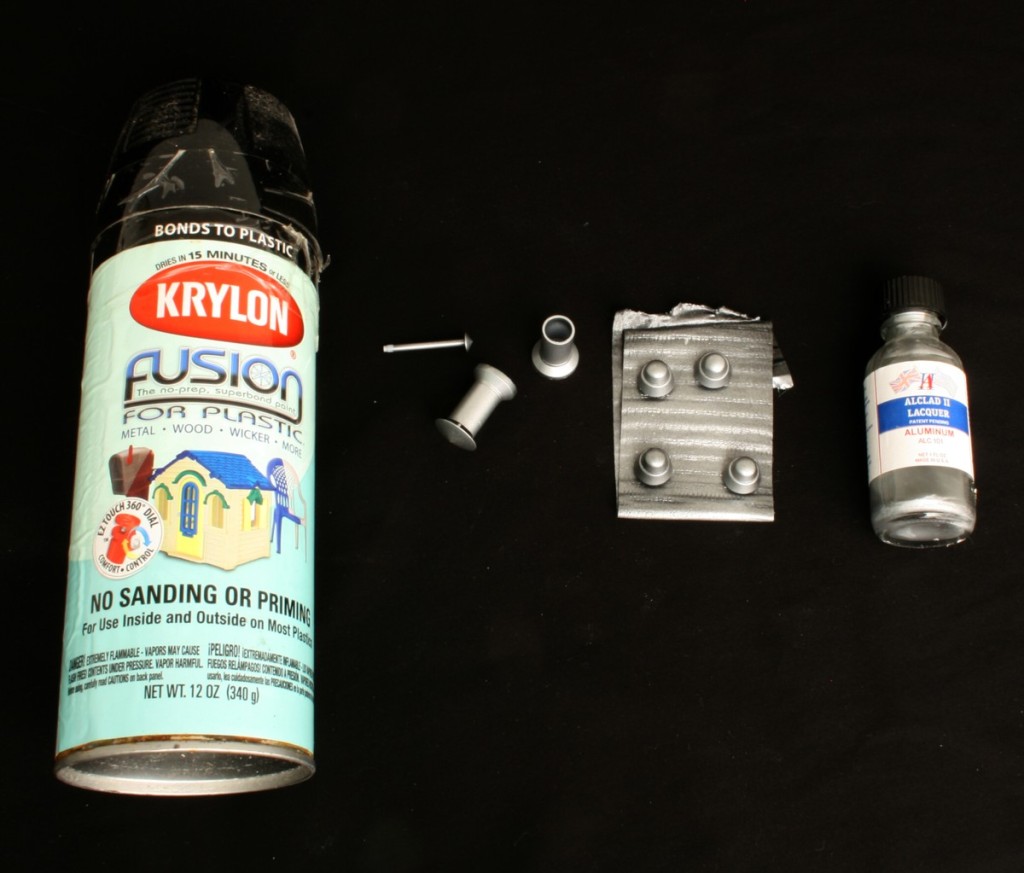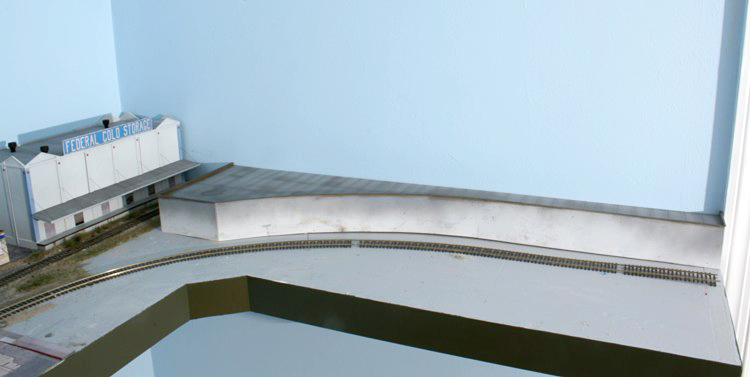Following my last blog on this subject Trevor Marshall was kind enough to point out Mike Confalone’s work with super weighting cars.
In a post on the Model Railroad Hobbyist forums Mike wrote: “Bottom line, if you want really reliable operation, and more importantly, prototypical operation, you should consider adding a LOT more weight to your freight cars. throw the NMRA standard out the window. It’s wimpy.
My proto-freelance Allagash Railway is set in 1980. We run heavy trains over terrain that is seldom flat. We have a couple of very nasty grades and a lot of curvature. I generally weight my 40′ and 50′ boxcars to between 9-12 oz. Same for covered hoppers. I use lead wheel weights. These are the little 1/2 oz or 1/4 oz self-adhesive strip weights that are used for wheel balancing. I get them by the box at my local auto parts store, instead of getting ripped off by the ridiculous A-Line weights for $5 a strip. Do they still make those? What a scam! A box from the auto parts store will last a long time, depending on the number of cars you need to weigh. I’ve gone through many boxes over the years. The guy at the counter always seems like he wants to ask me..”hey what are doing with all this lead anyway?”..but he never does!
For boxcars and covered hoppers, depending on how the car is built, I carefully pry the roof off and stick the lead strips to the lowest point in the inside (belly) of the car. I’m generally adding 6oz or so. The roofs on the new offerings from Tangent and Exactrail pop right off for an easy install. Kadee boxcars I take apart, or stuff the weight inside the door opening. Wherever I can get it so that it is not visible. For tank cars, I have to get a bit radical. I actually drill a hole in the bottom of the car and fill the car, to the brim with sifted play sand. Open hoppers are tricky, as are flats. Pretty much have to deal with them being light, and block them in the trains accordingly…on the rear. There are probably ways to solve these as well, but I haven’t experimented yet.
As-delivered these cars are all featherweight. Add the tonnage and the cars stay on the track, and they ACT like a freight car should (more prototypical switching and inertia, real tonnage simulation). They don’t jerk and jump around when switching. This tonnage, combined with lots of momentum on the locomotives actually creates a more natural response.
If you want to really simulate tonnage, you have to add weight, and lots of it. Locomotives call pull way too many out-of-the-box freight cars. The tractive effort, or tonnage rating, of a typical HO loco is way too high, especially on grades. To get a typical 25-30-car train up the 2.9% ruling grade over Holman Summit on the Allagash we NEED 4 or 5 units (4-axle Atlas or Proto 2K GP38s or Atlas C420/C424/5 for example). In other words, we don’t just put 4 or 5 on the train to make it look good, if we go with 3,we’re probably going to have to double the hill. This is prototypical. The Maine Central RR put 4-6 units on a 35-60-car train to make Crawford Notch. Other mountain railroads do the same.
The point here is to create a situation where you NEED the power to get the tonnage over the road. Not only is it prototypical, exciting and more interesting, but everything runs and rolls better, and we have zero derailments…and I mean zero. The only car that derailed at the last op. session was an Intermountain 4750 CH that I can’t seem to pry the roof off to get weight in it. Off the railroad and onto a shelf it goes.
I’ve never had a coupler fall out or a loco problem, and we operate regularly. A friend of mine lovingly predicts that I’m going to burn out a motor or decoder someday! Baloney! Make your locos work a bit. They can more than handle it. So far, so good.
Only word of caution. Use Kadee metal couplers..5’s or 58s. Throw the plastic ones in the trash. Beyond that, get to the auto parts store and buy a box of wheel weights. You won’t believe the difference!”
Regarding the difficulty in weighting tank cars Trevor wrote: “Mike C drills a hole in the bottom of each tank car, fills the car with clean play sand, and then seals the hole (with caulk, I think). A bit of paint and weathering and the small hole disappears.”
Further expanding on this subject Jason Arnot wrote: “For my very small layout, I use an extra Kadee knuckle spring and carefully place it over the needle-point end of one axle in each car. When the wheelset is placed in the truck frame, it creates enough drag that the car doesn’t run away, but the wheelset has no trouble rotating. I found it makes a small but noticeable change in operation. Cars tend to stay put where the train stops; it’s also possible to couple up without the stationary car moving even the slightest amount. If couplers are bunched, you can slowly pull out of a spur or siding and watch each car start moving individually, which I find very prototypical.”
I suggest you give it a try–it only takes 30 seconds to change a car–just one knuckle spring (you probably have thousands of spares on the workbench) over one end of one axle seems sufficient to my eye.”
Thanks Guys!


